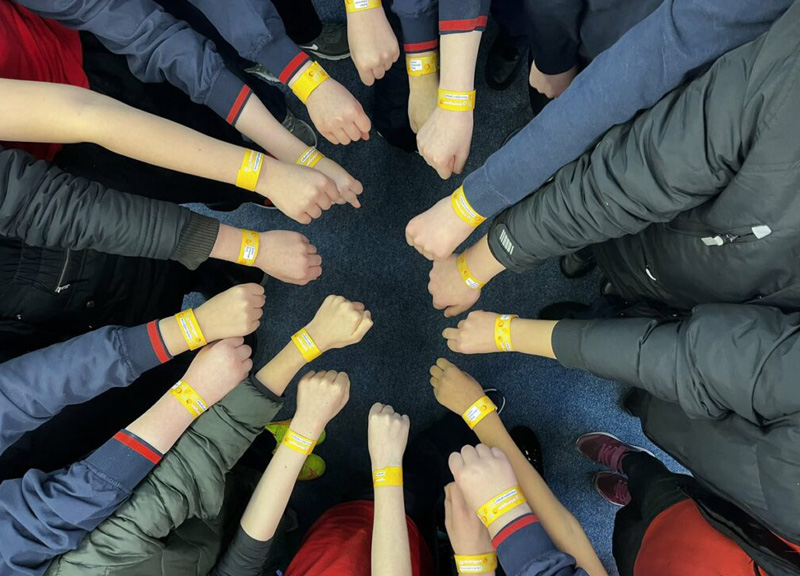Lesson 1 – The law on sharing intimate content
Being able to recognise that sharing intimate content is illegal for minors and the harm that sharing someone else’s intimate content, without their permission, can cause, will encourage students to act responsibly when they encounter intimate content online or when considering sending a sext.
Students will be able to determine when the exchange of intimate content online is illegal and will begin to consider the steps that can be taken when the exchange of intimate content online causes harm.
- +Curriculum Links
- Junior Cycle SPHE Short Course Strand 3:
Team up: The relationship spectrum, sexuality, gender identity and sexual health
Junior Cycle SPHE Modules: Relationships and sexuality;friendship
- +Differentiating this lesson for students with SEN
- Depending on the nature of the student’s SEN, there may be a need to have several lessons prior to this lesson to decode and demystify the complex language surrounding this topic. If a student has a reading age of 8, for example, he/she will find it extremely difficult to access language such as ‘explicit’, ‘consensual’, ‘non-consensual’. If a student has a moderate general learning disability content such as ‘genitals’ and ‘topless’ would need to be pre-taught thus ensuring that the learning task is compatible with prior learning.Some students with SEN, particularly those with dyslexia, may be unable to read/write
answers to the questions in Worksheet 1.1: Private Pics Online Quiz. Due to the complex nature of the topic and language the use of assistive technology could be employed to ensure that the students can access the text and express their thoughts on the matter. Speech to Text technology or vice versa may also be of benefit here.Some teenagers with SEN may lack social judgement and may find it difficult to comprehend right from wrong or legal from illegal. Carefully scaffolding Activity 2 may assist these students in grasping the concept of legal/illegal. This is particularly pertinent as these students need to develop the skills to protect themselves. SESS provide training in Social Stories™(http://www.sess.ie/socialstories-30).The walking debate in Activity 2 uses higher order thinking skills such as critical thinking. Due consideration should be given to the task to include all students.
- +Resources and Methodologies
- Worksheet 1.1: Private Pics Online Quiz
Worksheet 1.2: Legal or Illegal?
- Methodologies: Quiz, walking debate, group work, discussion
- +Teachers' Note
It is advisable to read the best-practice guidelines before engaging in lesson delivery. Before leading any of the activities included in this resource, it’s important that you have established clear ground rules with the class and that students see the SPHE class as an open and caring environment. Take the time to outline the supports available to students (both inside and outside of school), should they be affected by any of the issues discussed in the class and need to talk to someone. Highlight the fact that if there are any disclosures indicating underage sexual activity, you will be obliged to report the incident to the Designated Liaison Person. It is best to try to avoid discussing real cases, familiar to the students, and instead to focus discussions on the cases presented in the lessons.- +Activity 1.1 - Private Pics Online Quiz - Establishing the facts
- STEP 1: Explain to students that today’s class will focus on sending intimate content online or through other technologies (commonly known as ‘sexting’) and in particular on identifying when this behaviour is illegal and more problematic. Explain to the class that you don’t expect them all to know everything about sexting and that you want to emphasise that sexting is not something that everyone does. The sharing of intimate content without consent is always illegal. When the participants are under 18 it can even constitute a breach of the criminal laws which relate to child pornography. The purpose of these lessons is to help prepare students should they ever find themselves being pressurised to send intimate content or in a sexting situation that goes wrong.
- STEP 2: This first activity will help inform you on the students’ level of knowledge on the sharing of intimate content. The activity will also get students to think about some ofthe issues around the non-consensual sharing of intimate content.
- STEP 3: Have students complete Worksheet 1.1: Private Pics Online Quiz
- STEP 4: When students have finished the quiz, provide feedback on the correct answers. The FYI sheet will provide you with the information you need to give students the correct answers.
- +Activity 1.2 - Examining the different types of behaviour
- STEP 1: Once students have a clear idea on when it is illegal to exchange intimate content, have them work in pairs to analyse the case studies on Worksheet 1.2: Legal or Illegal.
- STEP 2:Students will examine and discuss each of the case studies on the worksheet. They then will indicate whether what happened is legal or not.
- STEP 3: You might choose to have students discuss these cases through a walking debate, rather than through pairs work. If using a walking debate, mark one side of the class as legaland one side as illegal. Then read the different scenarios out loud before having students move to different sides of the room depending on whether they think what happened is legal or illegal. In a walking debate, students then give their reasons for choosing a particular side and other studentsare free to change their mind by moving to the opposing half of the classroom
- STEP 4: Discuss the correct answers with the class, being sure to highlight any illegal behaviour.Case study 1: Illegal. Not only are the images explicit and of someone who is underage but sending the unwanted images repeatedly could be considered a form of harassment.Case study 2: Legal. The images are not explicit and are shared consensually.Case study 3: Illegal. While the images themselves are not illegal, as both people are of age, Laura then shares the images without Barry’s permission and so is violating dataprotection law.Case study 4: Legal. Though Shauna is underage, the images are not explicit and are shared consensually.Case study 5: Illegal. Even though Tommy and Zoe are old enough to consent to sexual intercourse, this activity is still illegal as Tommy didn’t get consent for recording.
- +Activity 1.3 - Is there consent?
- STEP 1: As a precursor to a class discussion, students will compare what happened in case study 2 with what happened in case study 3 and what happened in case study 4 with what happened in case study 5.
- STEP 2:Students will examine and discuss each of the case studies on the worksheet. They then will indicate whether what happened is legal or not.
- STEP 3: The following questions will help to direct the discussion:Q. How do the cases differ?Sample answer: In cases 2 and 4 images are shared consensually and no harm is caused. In cases 3 and 5 there is a lack of consent. In case 3, Laura shares Barry’s image, without his consent and in an attempt to get revenge on him. In case 5, Tommy doesn’t get Zoe’s consent before creating explicit content. Both Zoe and Barry have reason to be very upset at what has happened. They trusted their partners and this trust has now been abused.Q. What does consent mean? Do you have to get verbal or written agreement or can consent be implied?Sample answer: In order to have consent to post or share a photo, you must have gotten explicit permission to share the photo. You will need to have indicated where you intend to share the photo and have gotten either verbal or written confirmation that you have permission to share the content. The sending of a sext does not imply that the recipient has consent or permission to share the image in other contexts.Q. What should Barry and Zoe do to address the situations in which they find themselves?Sample answer: Barry and Zoe should first try to speak to their partners and have them delete the content before it spreads any further. They should also report the post using the reporting tools on the relevant social networks. Most social networks have a policy against the non-consensual sharing of intimate images and will remove content once they are notified. They could also report the incident to the Data Protection Commissioner. If Tommy and Laura refuse to remove the explicit content, Zoe and Barry should report the incident to the Gardaí. Both Barry and Zoe might also seek support from family, friends, teachers and Childline.






